| | Food Purchasing Trends in the Retail Sector
The recent annual market survey by Canadian Grocer revealed that the Canadian grocery retail sector had a somewhat difficult year in 2017. The economic situation, changing consumer expectations and behaviour, rapidly evolving technology and competition among different store formats have all contributed to this situation. Despite this tough environment, traditional grocers managed to increase their sales by approximately 1.4 per cent. Total grocery sales in Canada for 2017 was $95.8 billion.
The data shows significant regional differences in terms of retail sales. Ontario, British Columbia and Quebec show positive growth, with sales up 5.8 per cent, 4.2 per cent and 2.6 per cent, respectively in those markets. Prairie and Atlantic Provinces showed a decrease in sales for 2017 compared to 2016. In Atlantic Canada, total grocery store sales plunged by 9.1 per cent, which was the highest decrease in grocery sales in Canada. In Alberta, sales reflected the economic slow down in the province.
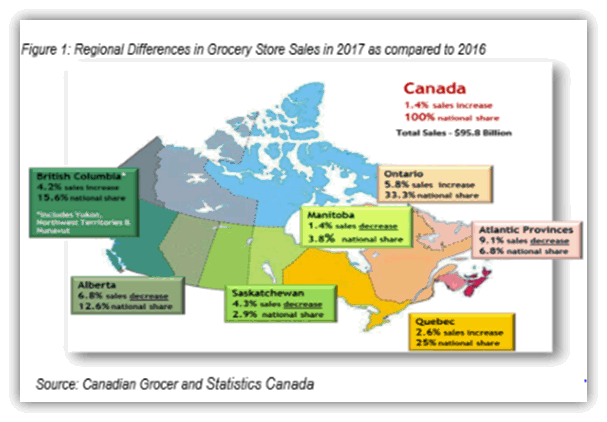
A closer look at food and beverage sales through Alberta retail grocery stores shows that sales started to slow down after 2014 and bottomed out in 2016. However, sales turned around in 2017, reflected by the very slight increase in growth for that year. Total food and beverage grocery sales in 2017 for Alberta was $14.65 billion.
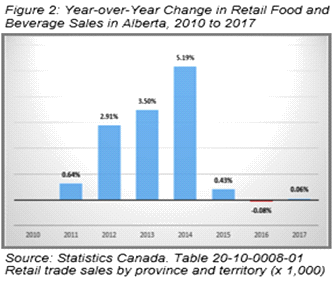
Food and beverage retail stores consist of four different store types. Traditional supermarkets and
other grocery stores, which lead in terms of market share at 75 per cent and convenience stores, and specialty stores each had five per cent of the market in 2017.
The market share for different store types are noted in Figure 3. According to Canadian Grocer, in 2016, total retail grocery sales were distributed among chains, group independents and unaffiliated independents at 76.4 per cent, 20.7 per cent and 2.9 per cent respectively.
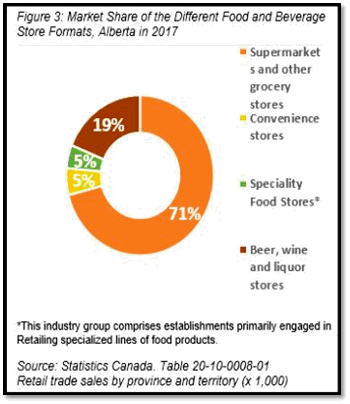
Digging deeper into retail food and beverage sales by store types shows how each was trending through the year. While traditional grocery stores are struggling to increase sales, specialty stores are performing well in Alberta, with an average growth rate of about 8.5 per cent over the past seven years.
Local Specialty Retailers and Suppliers
Although the economy’s performance did influence traditional grocery store sales significantly, its impact was felt more strongly in certain regions. There are many other changes affecting the entire industry, including; evolving consumer lifestyles and purchasing behaviours, a growing segment of Canadians who prefer on-line shopping, and intense competition from other store formats including mass merchandisers (Walmart, Costco and Warehouse Club Stores), discount stores (Dollar stores in Canada and ALDI & LIDL in US) and speciality stores.
The ever-changing retail landscape brings uncertainty along with potential opportunities and challenges for speciality food stores.
Changing Consumer Lifestyles and Behaviours
Healthy life style and healthy eating trends have compelled retailers to focus more on health as well. Many retail operators are making strategic investments in pharmacy chains and clinical businesses. New retail formats and health-oriented services are emerging. They are also expanding their shelf space for a range of natural, organic, speciality and better-for-you products. Many of these new formats are in smaller speciality stores. Therefore, speciality food suppliers should also have greater opportunities.
Many food consumers plan meals just hours in advance, seeking fast solutions. There is a big shift towards snacking and eating on-the-go. This evolving demand contributes to the blurring of traditional roles as retailers leverage the deli to capture sales from foodservice outlets. Many retailers are overhauling their formats to offer a foodservice-like atmosphere in their stores, along with other services like catering for a variety of eating occasions. Speciality suppliers and retailers may have an opportunity to supply or adopt co-branding strategies with traditional retailers and mass merchandisers.
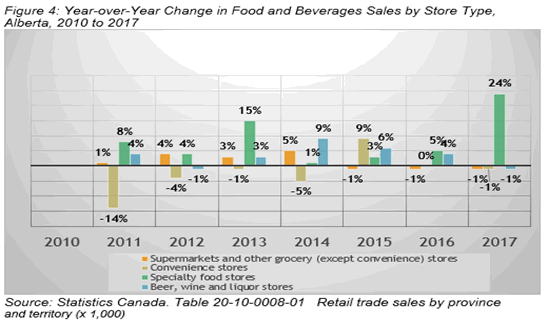
E-Commerce or Online Shopping Trend
Online shopping is still in its infancy in Canada, accounting for just two per cent of Fast Moving Consumer Goods (FMCG), compared to eight per cent in the U.S. However, Canada’s food e-commerce business is expected to grow from $2.7 billion annually to more than $6 billion by the end of 2020. According to research corporation ACNielsen, non-food categories are still leading e-commerce growth compared to their brick and mortar counterparts, where sales are more sluggish. Popular growth categories include baby care, over the counter medicines, pet care and paper products. However, the food category rounds out the top five with a 20 per cent growth in on-line sales. Commodity items and regularly purchased products will likely account for a significant percentage of this volume as product replenishment becomes more automated. The shift towards on-line retailing creates opportunities for speciality suppliers and retailers to expand their product assortment and to differentiate themselves with unique offerings. While investments in logistics in the online space can be a challenge, speciality suppliers will have opportunities, especially for shelf-stable items.
Speciality food suppliers also have opportunities in traditional retail space since retailers might be able to offer more products and a lot more variety as they expand their e-commerce capabilities. Therefore, speciality suppliers should think about creating stronger relationships with both higher-end brick and mortar retailers as well as e-commerce partners.
Competition from Other Retail Formats: The biggest challenge for speciality retailers and suppliers are from the mass merchandisers and discount stores. The continued growth in these retail formats is driving action from competitors in two key areas: pricing and private brand development. Speciality suppliers can seek to differentiate themselves from these low-price retailers by shifting upmarket and offering premium food items. In addition, they can collaborate with top retailers to supply their private-label products.
Data Highlights
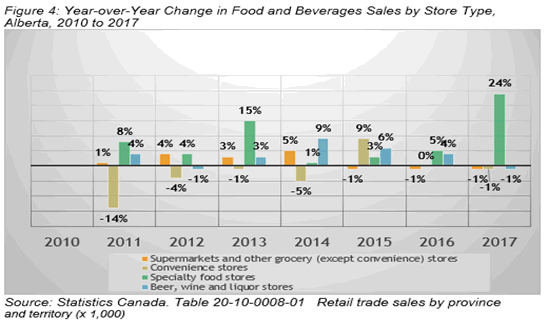
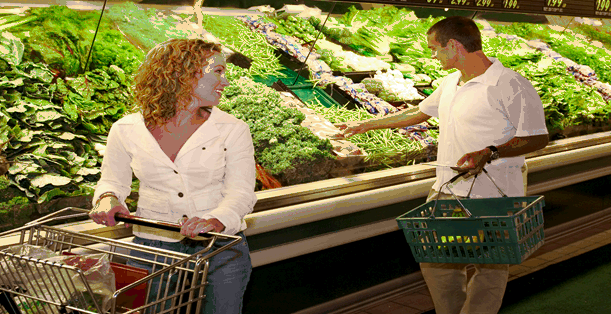
References
- Canadian Grocer, 2018. Annual Market Survey. Canadian Grocer, February 2018.
- Canadian Grocer, 2018. Who’s Who; Annual Directory of Chains and Groups in Canada
- Statistics Canada 2016. Monthly survey of food services and drinking places, by North American Industry Classification System (NAICS). CANSIM 355-0006
- Statistics Canada 2018. Retail Trade Sales by Province and Territory. CANCIM 20-10-0008-01
|
|